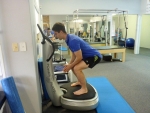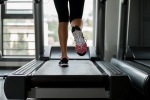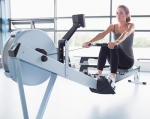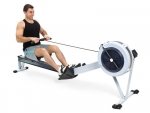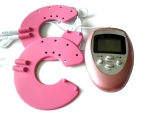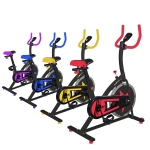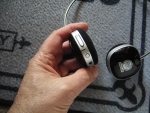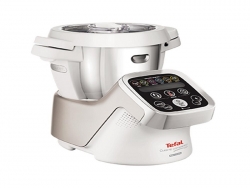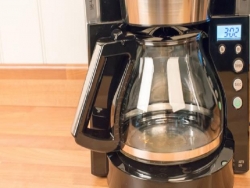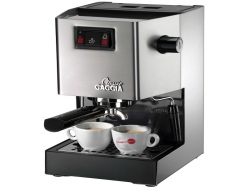US READY - The American's No1 Manufacturer of Exercise machines
6 Advantages of Free Weights Over Exercise Machines
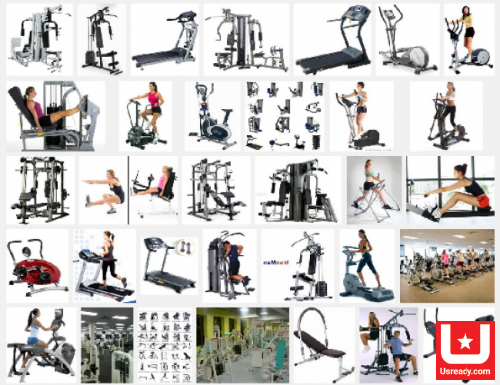
6 Advantages of Free Weights Over Exercise Machines
Intimidated by gyms her whole life, Sarah knew having her own home gym would be the key to her finally getting into shape. She had heard that machines were safer than free weights. Besides, the machine came with "easy to follow video instructions". The price was steep, but as Sarah imagined changing her body, she got her credit called and grabbed the phone.
On the day of delivery, Sarah was surprised to see it took up twice the space she was told it would, limiting space in her already cramped den. Excited to get started, she popped in the video, and hopped on the machine. Sarah soon found that she, at 5'3", was too small to fit on the machine for some of the exercises. She continued on anyway, trying to ignore the fact that her lower back and knees were starting to hurt a little.
Sarah used her new revolutionary machine exactly three more times. For the last six months, it has been her unofficial clothes hanger.
What happened? Sarah thought she was buying a machine that would be very easy to operate and be a safe alternative to free-weights. Unfortunately, Sarah and many others are misguided by heavily marketed hype by machine developers. When it comes to effectiveness, particularly for the beginning exerciser, free-weights (i.e., dumbbells) rate much higher than expensive exercise machines in terms of:
Cost. Three or four sets of dumbbells would have cost Sarah less than 10 times the amount she spent on her machine. As she gets stronger, she would have to buy more, though even a full set would not set her back nearly as much as the machine did.
Space. Dumbbells take up far less space than most of the exercise equipment sold on infomercials. You can easily place them in a closet, out of sight under the bed, or in a corner. There are even dumbbells you can adjust (i.e., PowerBlock) that allow you to adjust the poundage on one set, eliminating the need for single-poundage dumbbells.
Variety. Most machines are designed as one-dimensional. Even the most extensive multi-unit machines will allow exercisers to perform only a limited number of movements in a restricted range of motion. Free-weights can be used in ranges of motion based on the exerciser, not a machine. Use free weights along with benches or Swiss Balls and you have multitude of exercise options.
Suitability. Sarah couldn't use her "multi-usage" machine for certain exercises because the machine was too big. This is not an uncommon problem. Even though most machines have adjustable seats, arm pads, and lever arms, there are limitations to their range and some may not fit the very small or very large person. However, if you can grab a dumbbell, you can use it.
Functionality. Exercising with free-weights increases the likelihood that the effects of the exercise will cross over into real-world situations. Think about it. How often during the day do you lie in a diagonal supine position and push weight up like you would on a machine leg press? Probably never. But how often are you required to do activities that are biomechanically identical to the squat? Sitting, getting in and out of a car, crouching down to pick something up?all the time! Properly using free weights will increase the functionality of an exercise to real-world situations.
Safety. It seems counterintuitive to consider free-weights as safer than machines. Most of us have heard (somewhere..) that we could get hurt with dumbbells and that machines were "safer." Maybe just the idea of someone doing a huge bench press lends itself to imagining the likelihood that one might lose control of the same amount of weight if they ever attempted it.
Safety during exercise is more about proper form, technique, concentration and control rather than exercise apparatus. Someone can get hurt on a machine just as easily as with a dumbbell if incorrect form is used. As always, if you don't know how to do something, find someone (i.e., a reputable trainer) to show you how.
Safety as a result of exercise is a long-term issue. It is not necessary for the body to stabilize itself or the weight during movements on most machines, because the weight apparatus is fixed. Key stabilizer muscles are then never given the chance to get stronger. Free-weights allow the exerciser to utilize core muscles and allow multi-plane movement that forces the exerciser to strengthen stabilizer musculature, which support joints. Over the long-term, free weights are superior to machines for building a stronger, more functional body.
You don't need to spend a fortune on a piece of exercise equipment that you'll never end up using and won't suit your needs. A few sets of dumbbells are effective, intelligent alternatives to buying equipment, especially for those setting up their own in-home gym or workout area.
Tips for choosing the right exercise equipment
The numbers are shocking. Just three out of 10 American adults are active enough to stay healthy and fit, and nearly four out of 10 admit they aren’t active at all, despite reams of research proving that exercise is a powerful preventive, and sometimes an antidote, for disability and illness. This report features nine excellent workouts that will challenge your body and spirit in a variety of ways while warding off boredom.
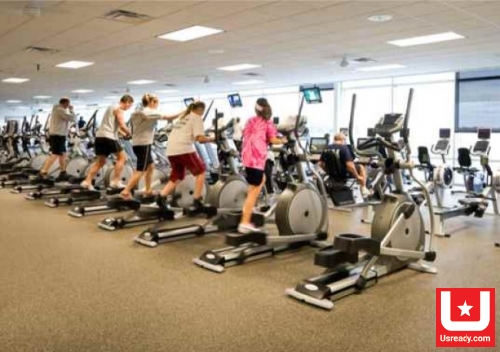
Tips for choosing the right exercise equipment
You can launch an effective exercise program using only what nature gave you: your body. But because regular activity remains an elusive goal for most people, a multibillion-dollar industry has blossomed around the promise of surefire success. Health club memberships and home exercise equipment are excellent exercise solutions for many people. Do keep these cautions in mind, though:
- Even the best equipment and most tricked-out gyms only produce results when used regularly.
- Learn to use equipment properly to avoid injuries that could sideline you temporarily or permanently.
- Exercise equipment comes in all sizes, shapes, and price ranges. It pays to check consumer ratings and follow our other tips for smart consumers before making your purchase.
Following are some basics you should know if you’re in the market.
Cardio equipment
If you stop by any gym, you’ll see rows of machines designed to simulate cycling, walking and running, kayaking, rowing, skiing, and stair climbing. Whether motorized or not, sized for heavy-duty gym use or in lighter home versions, these machines offer good cardio workouts that burn calories and fat. What’s more, your workout takes place indoors, away from fickle weather.
Price varies from a few hundred dollars to thousands, depending upon whether a machine is motorized or programmable, and whether it has add-ons, such as devices to measure heart rate, calories or METs burned, time elapsed, and so forth. While this information tends not to be entirely accurate, it could encourage you to step up your workouts or may be important if your doctor has advised you to limit activity. The following are some of the more popular types of aerobic exercise equipment.
- Cross-country ski machine
This machine lets you exercise arms and legs simultaneously, as you would in cross-country skiing. The sliding motion is easy on the knees. On some machines, you have to move one ski forward to make the other move back. On others, the skis move independently. In addition, certain ski machines use ropes, while others have stationary handgrips. Check out all these types to see which one is most comfortable for you. Look for a wide foot bed for stability.
- Elliptical trainers
These machines provide a circular up-and-down motion that’s a cross between a ski machine and a stair-stepper. They provide a nearly impact-free workout, which is easy on the joints. Resistance and grade can be adjusted automatically or manually on some models, and levers with handgrips to work the upper body may be available, too. It may take a little while to get used to the unusual motion. Look for comfortable handlebars and nonslip pedals with curved ridges. Try the machine out at varying speeds and grades to make sure it feels stable.
- Rowing machines
Rowing machines work the back, arms, and legs simultaneously, offering as close to a total-body workout as available from a machine. Unless you’re used to rowing, the motion initially may feel unfamiliar, and some people find it hard on the back. When purchasing one, consider pulley models instead of piston models for a more realistic rowing experience.
Stair-steppers
These machines provide a low-impact workout that approximates climbing flights of stairs. Some modes have levers with handgrips to work arms, too. Beginners may find stepper machines strenuous, and the motion can be hard on the knees. Look for machines that provide independent foot action and are equipped with handrails and large stair platforms.
- Stationary bicycle
An exercise bike takes no training and is easy to use, although it can be uncomfortable for long stints. While riding isn’t as effective in preventing osteoporosis as weight-bearing exercise, it does provide an excellent cardiovascular workout. Look for a model with a comfortable, adjustable seat and toe clips. If the seat is too hard, find out if you can replace the seat with a cushioned model bought separately.
- Treadmill
This machine enables you to walk or run indoors. Some models offer a flexible, less joint-jarring surface. Opt for a motorized treadmill. When purchasing one, look for a strong motor (the machine will last longer), a belt that’s long and wide enough for your stride, a sturdy frame with front side rails for safety, and an emergency stop device. You should be able to adjust the speed and grade so you can walk at a comfortable pace.
Strength equipment
By harnessing gravity, body weight, external weight, or tension as a resistance force, these devices help you build strength. As with cardio equipment, styles and prices range widely, from expensive professional equipment most often found in gyms and health clubs to affordable, portable home models.
If you’re just starting out, you can save a fortune by selecting a few basics — comfortable walking shoes plus hand weights or resistance bands or tubing — instead of investing a considerable sum of money in weight lifting machines.
- Ankle weights
These are optional for strength exercises like the side leg raise and hip extension. Look for comfortably padded ankle cuffs with pockets designed to hold half-pound or 1-pound weight bars to add as you progress. Ankle weight sets are usually 5 to 10 pounds. A single cuff may suffice, depending on the exercises you intend to do.
- Exercise mat
Choose a nonslip, well-padded mat for floor exercises. A thick carpet or towels will do in a pinch.
- Hand weights
Depending on your current strength, start with sets of weights as low as 2 pounds and 5 pounds, or 5 pounds and 8 pounds.
Add heavier weights as needed. Dumbbells with padded center bars and D-shaped weights are easy to hold. Weighted bands that strap onto wrists and kits that let you screw weights onto a central bar are available, too. Weights are a good place to save cash by checking sports resale stores.
- Resistance bands and tubing
Resistance bands or tubing can be used for a full-body strength workout. Attractive features include low cost, light weight, portability, and ease of storage. As with weights, you can measure how challenging the resistance is by how many repetitions of an exercise you can do: if less than eight, resistance is too high; if more than 12, it is too low. Positioning your hands or feet closer together or farther apart on the band or tube before starting an exercise helps vary resistance. Try different positions to learn which make repetitions easier or harder.
- Bands
These look like big, wide rubber bands. They come in several levels of resistance from very light to very heavy, designated by color.
- Tubing
Look for tubing with padded handles on each end. These also come in several levels of resistance from very light to very heavy, designated by color. Some brands come with a door attachment helpful for anchoring tubing in place when doing certain strength exercises.
>> See more: USReady
How to Use Gym Exercise Equipment
Every exercise machine you'll find in the gym is a little different. But most of them -- especially the cardio machines, and some of the weight machines -- operate on the same basic principles. As long as you're oriented as to those principles, you can jump right in and use most of the machines right away, with nothing more than a glance at the machine's instructional placard for quick reference.
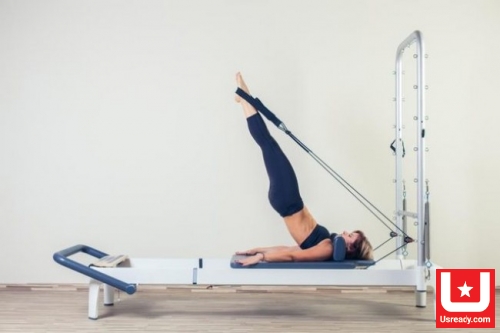
How to Use Gym Exercise Equipment
Cardio Machines
No matter which cardio machine you select, almost all of them will have a "Start" or "Quick Start" button you can press to get started immediately. This sets you up for a manual program -- in other words, controlling the machine's resistance or speed manually. You might also need to enter your age and weight to help the machine estimate your calorie burn.
If you'd rather use a preprogrammed workout, look for an "Enter" or "Program" button, then follow the machine's prompts to select a program. On some machines, you have to start pedaling before you hit the button.
Setting Up a Weight Machine
Although they might all look different and be build to target different muscles, gym strength-training machines also follow a few basic principles. Start by selecting the proper resistance -- you either slide a pin into a weight stack or load weight plates onto the machine. In a few limited cases, you might push buttons to increase and decrease hydraulic or electronic resistance. If you're not sure how much resistance to use, start with the least weight possible and then work your way up.
Next, adjust the machine's seat, backrest or chest pad so that your joints line up with the machine's joints -- that is, the axes upon which its levers move. On the rare occasion that guideline does not apply, adjust the seat so you can grasp the machine's handles comfortably.
Using a Weight Machine
Once you've set up the weight machine to fit your body, sit down and grasp the handles. Pull or push them -- whichever motion raises the weight stack or weight plates -- in a smooth, controlled motion. If any of your body parts started out in contact with the machine's padding -- say, a chest pad or backrest -- maintain that contact as you lift and lower the weights. As long as you maintain a steady pace you will, in most cases, naturally restrict yourself to an appropriate range of motion. A count of two as you lift the weight, then three to four as your lower it, works well.
Exceptions to the Rule
There are only a few exceptions to these basic principles. In terms of cardio machines, most rowing machines won't fire up until you sit down and start rowing. Then you can either continue rowing -- many rowing machines still let you adjust resistance by moving a lever -- or, in a few cases, program the rowing machine to play a game, like racing against another nearby rower or against a previously recorded time.
In terms of weights, free weights -- and to a lesser degree, cable machines -- are different animals entirely. Working with weight machines can prepare you for the weight room, somewhat, by familiarizing you with the proper body mechanics. But as a general rule, it's best to get help from a trainer, gym staff or an experienced lifter before you move on to free weights.
Posted by Uyên Vũ Tags: Advantages of Free Weights Over Exercise Machines, Exercise machines, How to Use Gym Exercise Equipment, The American's No1 Manufacturer, US READY

